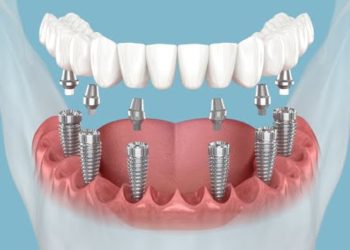We all experience stress in our daily lives, but what if there was a simple way to manage it, and the way is breathing! We breathe all day without thinking, but intentional breathing practices can play a big role in our well-being and reducing anxiety. Let’s look into how the science of deep breathing can give us a simple tool for stress management.
The Science of Breathing and Stress
The link between breathing and stress is hardwired into our bodies. Knowing this can help us use breathing to manage stress better.
How Stress Affects Breathing
When we’re stressed, our bodies try to take in less oxygen and tense the body, which makes us breathe shallow and fast from the chest. This breathing pattern is called thoracic breathing, and it intensifies the physical sensation of stress. This altered breathing pattern can trigger a cycle of more anxiety and more rapid breathing, creating a feedback loop that makes stress responses stronger and tougher.
The Body’s Stress Response and the Autonomic Nervous System
The autonomic nervous system is key to our stress response. It has two branches: the sympathetic (fight-or-flight) and parasympathetic (rest-and-digest) systems. When the fight-or-flight system kicks in, it increases our heart rate and blood pressure and makes breathing heavier.
Deep slow breathing, on the other hand, engages the rest-and-digest system and counterbalances the stress response. As the study suggests, it lowers heart rate, blood pressure, and cortisol levels, putting us back into a state of calm and relaxation.
Physiological Effects of Deep Breathing
Deep breathing has many physiological effects on the body which help with stress reduction and overall well-being.
Heart Rate and Blood Pressure
Deep breathing lowers heart rate and blood pressure. Studies show that slow controlled breathing reduces the workload on the heart, lowers the resting heart rate, widens the blood vessels, and lowers blood pressure. That’s why regular deep breathing exercises can lead to long-term improvements in cardiovascular health which is great for managing hypertension and reducing the risk of heart disease.
Parasympathetic Nervous System
Deep breathing activates the parasympathetic nervous system, or the “rest-and-digest” system. This counters the effects of the sympathetic “fight-or-flight” response that comes with stress. So, it relaxes the muscles, slows down heart rate, and improves digestive and reproductive systems. This shift in nervous system balance helps to rebalance and reduces the negative effects of chronic stress on the body.
Those who look for quick anxiety relief often find breathing exercises as a great tool to quickly ground and return balance to the mind, as you basically tell the brain, “There’s no danger around as you can breathe so deeply and calmly. ”
Endorphins and Other Feel-Good Chemicals
Deep breathing releases endorphins and other feel-good chemicals such as serotonin, dopamine, and oxytocin, which are associated with mood regulation, pleasure, and stress relief. The increased oxygen to the brain during deep breathing also improves cognitive function and mental clarity.
By the way, slow breathing exercises are associated with better emotional regulation and psychological well-being, according to the study.
4 Effective Deep Breathing Techniques
1. Diaphragmatic Breathing
Diaphragmatic breathing (also known as belly breathing) focuses on the diaphragm muscle. Here’s how to do it:
- Lie down or sit
- Put one hand on your chest and the other on your belly
- Inhale slowly through your nose and feel your belly rise
- Exhale slowly through pursed lips and feel your belly lower
- Do for 5-10 minutes
This technique increases oxygen flow, lowers heart rate, and relaxes. The study suggests that this type of breathing may lower cortisol (stress hormone) levels and improve attention.
2. Box Breathing
Box breathing (or square breathing) is equal counts for inhale, hold, exhale, and hold. Here’s how to do it:
- Inhale for 4
- Hold for 4
- Exhale for 4
- Hold for 4
- Repeat the cycle
This is often used by military personnel for stress regulation and performance improvement.
3. 4-7-8
The 4-7-8 technique, developed by Dr. Andrew Weil, combines breathing with meditation. Follow these steps:
- Exhale completely through your mouth
- Close your mouth and inhale through your nose for 4
- Hold your breath for 7
- Exhale completely through your mouth for 8
- Repeat 3-4 times
This helps with anxiety, unhealthy cravings, and sleep quality.
4. Alternate Nostril Breathing
Alternate nostril breathing (Nadi Shodhana) is a yogic practice that balances the left and right sides of the brain. Here’s how to do it:
- Close your right nostril with your thumb
- Inhale through your left nostril
- Close your left nostril with your ring finger
- Open your right nostril and exhale
- Inhale through the right nostril
- Repeat, alternating nostrils
This helps with focus, stress and overall well-being.
Deep Breathing in Action: When to Use
Here are some practical applications of deep breathing to try in your daily life:
In Acute Stress Situations
When faced with sudden stressors, taking 5-10 deep breaths activates the parasympathetic nervous system and lowers heart rate and blood pressure. This quick technique helps you regain composure in high-pressure situations, like before a presentation or during a conflict. By focusing on slow, deliberate breaths, you shift your attention away from stress triggers and return attention to your body to think more clearly and respond more calmly.
Deep Breathing for Daily Life
Deep breathing in daily routines creates a solid basis for ongoing stress management. For example, pairing deep breaths with regular activities like waiting in line or during commutes turns idle time into relaxation time.
Setting aside 5-10 minutes each morning for focused breathing exercises sets you up for a calmer day.
For example, the wellbeing app HeyZen helps people naturally include breathing practices into daily routines by creating personalized daily plans based on one’s unique needs. With consistent practice, you can be sure that your nervous system and emotional regulation are always propped up by healthy body practices.
Breathing for Better Sleep
Doing the 4-7-8 technique is often used to release stress and anxiety before bed. Also, adding diaphragmatic breathing while already in bed may help with lowering heart rate and getting you into a state of calm so that you fall asleep easier and sleep more deeply.
Overcoming the Challenges of Deep Breathing Exercises
Deep breathing is a powerful stress management tool, but establishing a practice can be tough. Start small and fit in short sessions into your daily routine. Remember, it’s normal to feel awkward or distracted at first. Stick with it, and you’ll soon see how calmer and more mindful you have become!
David Prior
David Prior is the editor of Today News, responsible for the overall editorial strategy. He is an NCTJ-qualified journalist with over 20 years’ experience, and is also editor of the award-winning hyperlocal news title Altrincham Today. His LinkedIn profile is here.













































































